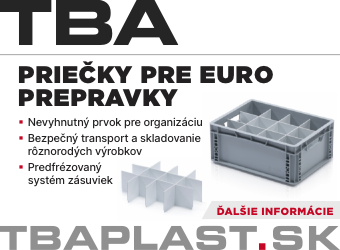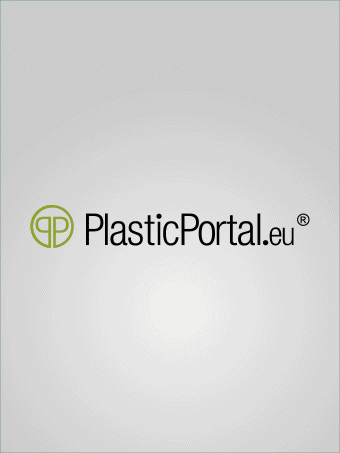Weekly commodity price report
Here are the market prices of various types of commodity plastics PE-LD, PE-HD, PP and PS in Central and Eastern Europe with a delay of 5 weeks. The data was processed by our partner myCEPPI.
Are you interested in current prices for commodity plastics? You can order Weekly polymer price reports from our editors.
Prices for this week 9/2018
The following factors influenced “commodity” polymer prices and price expectations last week:
- BRENT oil price 66.39 USD/barrel, increasing prices,
- EUR/USD: 1.2326, strong Euro
- NAPHTHA: 553.68 USD/t, increasing prices
Last week was silent on the CE market. Most purchases took place in the first week of February. Typically only those in absolute need of feedstock have purchased. As the supply is broad in case of almost all feedstock grades, traders prompt their buyers to buy using minor discounts. This results in the widening of the price ranges and prices for market players seem to have started dropping. Maybe this is the reason why plastic converters did not start speculative pre-purchases in spite of the season starting in the spring. Otherwise the spring season seems to be in delay. According to the weather forecast the start of the spring is expected only as late as in the second half of March. This curbs the demand for use in construction and agriculture alike and postpones the season start by two weeks at least. This is also one of the reasons why converters did not really buy in advance for March. Though now the warehouses of CE polyethylene producers are full. During the period March to May supply will be lower. The new LDPE (4) plant of Slovnaft (capacity 220 kt/year) will be down in March for one month for maintenance, though at the same time the old plant will be started up again (180 kt/year). This reduces the supply-induced pressure in the region by some 3,500-4,000 tons. Of course MOL is prepared and there are sufficient inventories available to serve the customers. However in the period from the middle of April to the middle of May HIP-Petrohemija will be down /both the HDPE (capacity: 90 kt/year) and LDPE plant (capacity: 55 kt/year). All this means that in the central and southern region, by the end of April at latest the “problem of oversupply” will be resolved. This, coupled with a favorable spring season, can trigger the price increase of polyethylene grades at last.
Now market players are busy with the usual end-of-the-month question: Where will prices be heading in March? Like always also now monomer prices will be decisive. But this is also the field with the highest degree of uncertainty. In February both the price of crude oil and naphtha has dropped, also spot olefin monomer prices were just slightly higher than contractual prices. All this implied so far that with highest chances monomer roll-over can be expected. But last week both the price of crude oil and naphtha started increasing, which can be the basis for a slight (0-30 €) ethylene and propylene price increase. In case of styrene rather a price increase by 50-60 EUR can be expected. This can then be part of the polymer price increase. As we wrote also last week, Central-European prices are on the average by 25-50, and in some cases even by 90-100 € lower than prices in Western Europe. In this way there is a significant pressure, first of all from the side of European producers to increase polyolefin prices. Yet the market situation is more complex because of the fact that compared to the size of the Central-European market a relatively high quantity of goods imported from outside of the EU arrives in the region. First of all from Russia, Iran and South-Korea. The Euro getting stronger gives a significant price advantage to import accounted in USD. The good news are that import shipments expected now and by March are already more expensive. In this way the price of import materials starts catching up on that of the materials produced in Europe.
A slight price increase would be great for the overall polyolefin market. This would indicate the season’s start and would make buyers leave their usual “sit and wait” tactics. In opposite situation, should prices not increase, the situation experienced as of the middle of April 2017, when the market slowed down in spite of the season and prices eroded continuously until the summer might arise. Then prices started increasing out of the season and to drop in the middle of the autumn season. With all this strengthening speculation on the market.
Polyolefin grades
The warehouses of LDPE producers are full. Because of the delay of the season start the demand is unusually low for February all over Central-Europe. Prices are in Poland in a range of 1,150-1,190 Euro. Outside of Poland in Central-Europe the typical price range where deals were made was 1,180 – 1,210 €/t. In the southern region prices remained on the level of last week, in a range of 1,140-1,180 €. Converters expect unchanged prices by March, while polymer producers anticipate price increase. In their opinion a price increase by 0-20 € is probable in March. In the first half of the month low demand and in the second half of the month growing demand, supply getting shorter and increasing prices can be expected.
The demand for HDPE FILM grades was shrinking as well. The typical price range was 1,080-1,160 € depending on the grade and producer. The demand for BM grades increased as well, the price range was 1,060-1,130 Euro. Polish prices are still by 10-20 € cheaper. The cheapest prices are still typical for the most simple IM grades, last week the price range expanded again ( 1,000-1,120 €) due to the FCA prices sometimes below 1,000 on the Czech market.
The HDPE pipe (100) price range remained 1,390-1,480 € in February. The market shows no signs of dynamism compared to the first half of the month. Converters expect roll-over, unchanged price band. Pre-purchases happened as early as in January.
LLDPE C4 prices are unchanged, we measured prices in a range of 1,120-1,180 €. Poland and the SCE region are still the cheapest, the trading price range is still 1,120 €-1,140 €. In the MCE region offers vary in a range of 1,140-1,180 €. Due to the strong Euro we expect no increase.
mLLDPE prices did not change last week, they were in a range of 1,260-1,330 €. In Poland last week sales happened typically below a price level of 1,300 €. Though this seems to be a decreasing price tendency, but the volume sold was low. However the majority of converters has purchased at the beginning of the month, in this way the average price level in February did not change. We expect a slight increase by 10-20 € compared to the beginning of the month.
The PPH market is split into two halves in Central-Europe. In Poland last week very low PPH prices of goods from Iran spooked the market. Last week the cheapest offers were in a range of 1,030-1,060 € in case of Raffia grades, while even the price of the cheapest Russian grades exceeded 1,120 €. These cheap prices mislead the market and give rise to erroneous expectations among plastic converters. Converters feel that there is sufficient and cheap material on the market. In reality this is not the case. Contrary to the polyethylene situation the inventories of producers are not high. March might be a surprise, when in the second half of the month, simultaneously with the demand getting dynamic supply might get significantly shorter. In the other CE countries prices correspond to the market situation, the typical price range in case of PPH IM grades was 1,150-1,220 €, while in case of raffia grades 1,130-1,170 €/t last week.
In case of PPC the Polish market is faced with similar problems. Cheap materials from South-Korea and Iran offered in a range of 1,220-1,250 €/t make normal sales impossible on the market. In the meantime European producer prices vary rather in a range of 1,250-1,300 €. In the other parts of Central-Europe the typical price range is 1,280-1,340 €. By March, with a price increase by 0-20 € the most probable price scenario is roll-over. In case of very cheap materials imported from outside of Europe a price increase by 20-50 € is probable.
On the PPR market prices are typically higher than 1,300 €, but exceed the level of 1,400 € just in case of some products. Supply is short, there is not much material on the market. We can expect slightly increasing prices (+10-20 €/t) in March.
The prices of the last week are presented in the table below (full truck load 20-22.5 t):
Grade name | Typical polymer price ranges in the third week of February, 2018, Central Europe (€/ton) |
HDPE BM | 1,040-1,160 |
HDPE Film | 1,060-1,180 |
HDPE IM | 1,000-1,160 |
HDPE Pipe (100) | 1,380-1,490 |
LDPE Film | 1,150-1,250 |
LDPE GP | 1,150-1,230 |
LLDPE C4 | 1,120-1,180 |
PPC | 1,220-1,320 |
PPH IM | 1,050-1,270 |
PPH Raffia | 1,030-1,220 |
PPR | 1,290-1,390 |
GPPS | 1,350-1,700 |
HIPS | 1,450-1,750 |
EPS | 1,680 -1,760 |
Polystyrene grades
On the EPS neither demand nor supply were significant last week. Polymer producers have closed their order books already. Because of the starting season demand is not significant, the feedstock warehouses of converters are full. In March we anticipate a price increase by 30-60 € following monomer prices.
GPPS demand is good, but the demand for HIPS is low. Import from Iran and Russia is now missing from the market. During the last months the export of European producers to the Ukraine and to Belorussia increased significantly. The typical GPPS trading price range was 1,450-1,650 € last week. HIPS was in a range of 1,500-1,680 €. There was no change. As prices are extremely high, incoming import will be well received in March. There are doubts as to whether polymer producers will be able to realize a monomer price increase.
| Type | Price |
|---|---|
| HDPE blow molding | 1104 € / t |
| HDPE film | 1113 € / t |
| HDPE injection molding | 1100 € / t |
| HDPE pipe (100) | 1421 € / t |
| LDPE film | 1187 € / t |
| LDPE general purpose | 1188 € / t |
| PP co-polymer injection molding | 1281 € / t |
| PP homo-polymer fiber | 1174 € / t |
| PP homo-polymer injection molding | 1180 € / t |
| PPR | 1330 € / t |
| GPPS | 1478 € / t |
| HIPS | 1598 € / t |
| EPS | 1695 € / t |
myCEPPI – a new voice and new approach on the plastics industry consulting and business intelligence market. With our expert advice, you can get a detailed, up-to-date and tailor-made picture of the Central and Eastern European plastics market and its main trends, data, news and key players.
Our services rely on our personal, regular and in-depth relations with players of the CEE plastics industry.
Each month, we conduct hundreds of interviews and telephone calls with industry players – plastics converters, traders, resin manufacturers – and we are also present at the biggest regional plastics trade fairs and conferences.
The information we collect in the process forms the basis of our weekly price report and market analysis; it feeds into our plastics industry company database; and it serves as the starting point for our multi-level consulting services for companies that need help sizing up, entering or navigating a specific market.
Our experts possess decades of plastics industry experience, as well as fluency in several regional languages.
Our partners include
- key players of the CEE plastics industry – the resin
- master-batch and machinery manufacturers
- distributors, and plastics converters that shape market trends across the region.
We would be happy to welcome you as a partner; please do not hesitate to contact us!
(László Büdy, Managing director, head of consulting)
Price history
- 2024:
- 2023:
- 2022:
- 2021:
- 2020:
- 2019:
- 2018:
- 2017:
Latest Classifieds
For Sale: PP regrind black, MFI 10
15.10.2024 | ID: 202419944
Top AdvertTo purchase: PP homopolymer for recycling
20.11.2024 | ID: 202420101
To purchase: LDPE foil for recycling
20.11.2024 | ID: 202420100
Cooperation: Wanted: PE-PP dirty granulates from ground
19.11.2024 | ID: 202420097
To purchase: LDPE film in bales
19.11.2024 | ID: 202420096
-
18.11.2024 | ID: 202420093
-
18.11.2024 | ID: 202420092
-
18.11.2024 | ID: 202420091
-
18.11.2024 | ID: 202420090
To purchase: PP homopolymer for recycling
20.11.2024 | ID: 202420101
To purchase: LDPE foil for recycling
20.11.2024 | ID: 202420100
To purchase: LDPE film in bales
19.11.2024 | ID: 202420096
To purchase: PA 6/66 GF 30 regrind
18.11.2024 | ID: 202420089
To purchase: Plastic scrap from production
18.11.2024 | ID: 202420081
-
18.11.2024 | ID: 202420078
-
16.11.2024 | ID: 202420076
To purchase: Plastic scrap from production
11.11.2024 | ID: 202420053
To purchase: PA 6/66 GF 30 regrind
11.11.2024 | ID: 202420043
For Sale: PP regrind black, MFI 10
15.10.2024 | ID: 202419944
Top Advert-
18.11.2024 | ID: 202420093
-
18.11.2024 | ID: 202420092
-
18.11.2024 | ID: 202420091
-
18.11.2024 | ID: 202420090
For Sale: PP-COPO white regranulate
18.11.2024 | ID: 202420088
-
18.11.2024 | ID: 202420087
For Sale: HDPE regranulate - natur/white
18.11.2024 | ID: 202420086
For Sale: HDPE regranulate - natural
18.11.2024 | ID: 202420085
Upcoming Events
25.11.2024 - 28.11.2024 | Erbil
26.11.2024 - 29.11.2024 | Shenzhen
28.11.2024 - 30.11.2024 | Riga
04.12.2024 - 07.12.2024 | Istanbul
Plastics Recycling Show India 2024
04.12.2024 - 06.12.2024 | Mumbai
13.12.2024 - 16.12.2024 | Yangon
07.01.2025 - 09.01.2025 | Düsseldorf
World Future Energy Summit 2025
14.01.2025 - 16.01.2025 | Abu Dhabi
22.01.2025 - 23.01.2025 | Paríž
19.11.2024
Plastic, Printing & Packaging, Africa 2024
20.11.2024
Plastics & Rubber Indonesia 2024
20.11.2024
25.11.2024
26.11.2024
Job offers
Business - technical representative of professional tools - the whole SR - ant s.r.o.
20.11.2024
Obchodno-technický zástupca spoločnosti LIFOCOLOR, s.r.o.
11.11.2024
Production worker Brno - LIFOCOLOR, s.r.o.
06.11.2024
Commercial - technical representative, western Slovakia - Wermaly s.r.o.
05.11.2024
Production operator - inspection of plastic products - ESOX-PLAST s.r.o.
30.10.2024
Logistics dispatcher for plastic moldings - JASPLASTIK-SK spol. s.r.o.
30.10.2024
Sorter - adjuster of injection moldings - Plasted spol.s r.o.
14.10.2024
Adjuster - AIS Automotive Interior Systems Slovakia s.r.o.
11.10.2024
Moulding Machines Setter junior - Nanogate Slovakia s.r.o.
09.10.2024
Branch Dictionary







